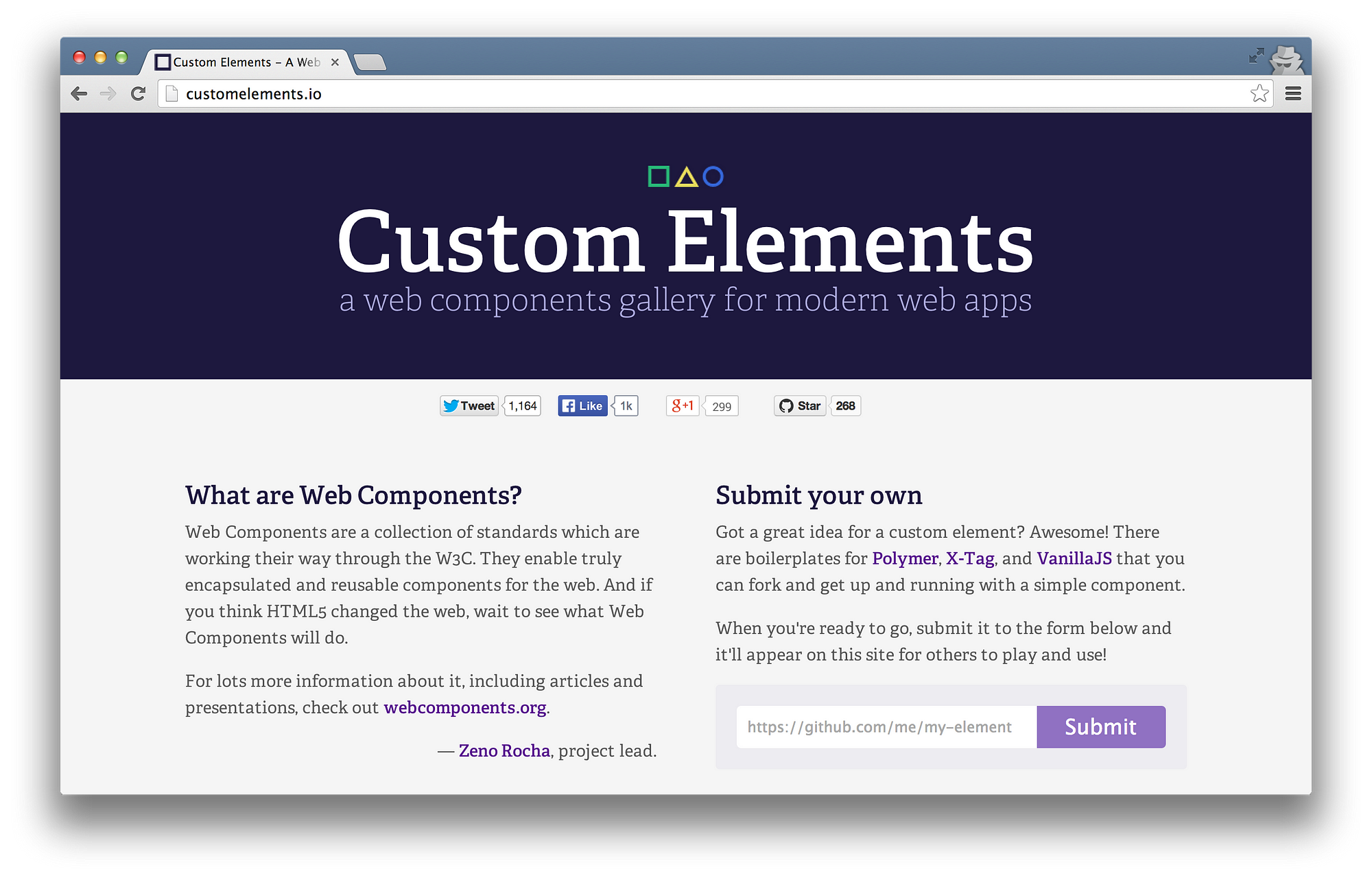Where we are and what’s to come
2015 has been an incredible year for CustomElements.io.
I'm incredibly proud of every single step we made as a team and extremely grateful for having such a vibrant community around us.
This story is about how we went from this image below to what we have now and what are the plans for 2016.

More Contributors
Back in August, 2013 there was only Eduardo Lundgren and Bernard De Luna helping me build this little tool for a presentation at BrazilJS Conf. After I did that talk it was time to see how the community would react.
it's a pleasure to see how many people are tweeting and talking about http://t.co/ugMz6rU3Kc ! More than 30 custom elements so far!
— bernarddeluna (@bernarddeluna) September 4, 2013
In 2014, as the project grew, Djalma Araujo jumped in and we pivoted from being a hand-picked catalog to an automated search tool.
For 2015 I wanted to take a bigger step and really scale up this thing, but I needed help. That's how Giovanni Keppelen and Italo Waxman got in and together we rebuilt this project from the ground up.
Redesign And Architecture
In May, 2015 we introduced a new discoverability experience for the community based on Material Design elements and built on top of Node, Hapi, ElasticSearch, and Web Components.
The main focus for this release was to modernize the site and make a strong foundation for new features to come.
New User/Organization Pages
After improving the search mechanism, we decided to create author pages that shows your contact information and your portfolio of elements. That helped us to promote more engagement with users and organizations.
If you have an element listed on customelements.io, you have a great author page as well: https://t.co/Xz6VLg7Ap5 pic.twitter.com/WY5ZTXTHnd
— Maurizio Mangione (@granze) August 6, 2015
New Repository Pages
The next step was pretty obvious — we needed dedicated repository pages and that's exactly what we did. Suddenly, there were more than a thousand new pages for users to navigate and our numbers increased drastically.
Each one of those pages are powered by data from services like GitHub, Bower, and npm which helps the user to make a decision about using a particular project or not.
Big news! 🎈
— Custom Elements (@custom_elements) September 8, 2015
We have new pages for every single element https://t.co/umBaCMBH4V pic.twitter.com/HScoJWZZDp
Plans For 2016
In terms of features, we know that there's a lot of room for improvements on discoverability. Making our search mechanism better is our number 1 priority for next year.
However, the only way for us to continue working on this project is to obtain some sort of sponsorship. At this moment, we're trying to find companies that share the same open source vision. If you happen to know one of those companies let me know (hi@customelements.io).
In the end, our goal is to make it dead-simple for developers to share their work and reuse code from others. We were and we’ll always be committed to help the web development community.
“Having a site dedicated to components is and will continue to be important. Applications and development flows that take full advantage of the HTML APIs presented by web components are going to benefit from staying in that environment. There’s nothing preventing a developer from using a widget developed with this or that library, but it’s that cognitive switch that will be optimized against. The future holds a large number of reimplementations of existing widgets in its path, and sites like CustomElements.io are going to be important to manage them.”